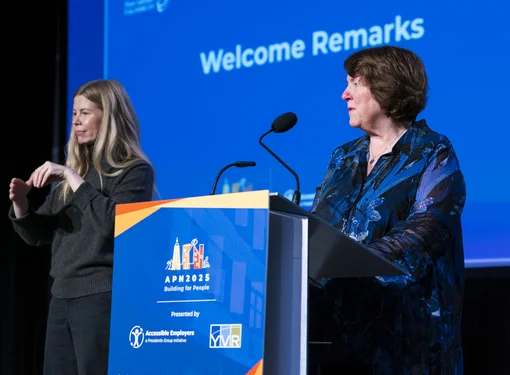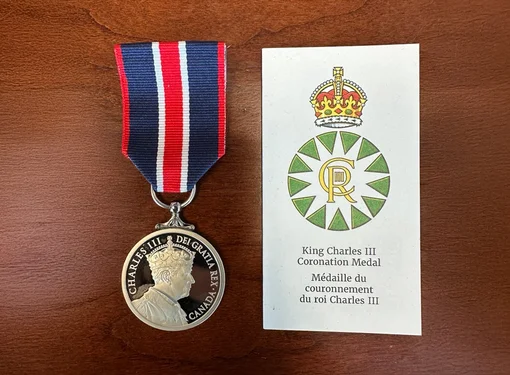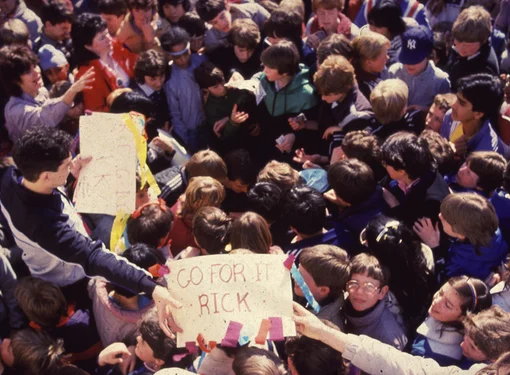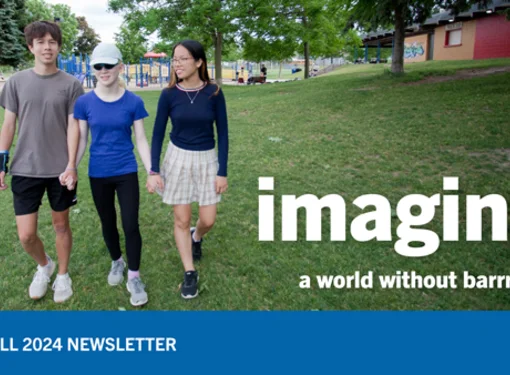The Fault in Our Hollywood Stars
The film industry has a strong control over how we see and perceive the world. Films and television shows can make us laugh, cry, angry, or all three. They can motivate us to act, ranging from mere fandom to social change. They can be used to make political statements in a creative and engaging way.
With all this history of progress, it is somewhat surprising to know that the treatment of disability, both on- and off-screen, remains a challenge and a barrier. While there has been progress in recent years, it has been slow. Many lingering issues include the positive or negative portrayal of disability and who gets to portray characters with disabilities.
Before the age of film and television, there was still acting. When William Shakespeare's plays were being performed, stage acting for women was not socially acceptable. To handle this issue, all female characters were portrayed by men. As a result, there could be wildly inaccurate or unrealistic portrayals of women on the stage, because they were being played by people who had no real-life experience at being women – they often had to rely on stereotypes.
However, despite increasing diversity in film, many roles are still out of reach for actors with disabilities – even if the roles involve characters with disabilities.
This has led to many characters with disabilities being largely based on stereotypes that society has created erroneously. Marilyn Dahl of the University of British Columbia points out that commonly, they were often categorized as either inherently evil or inherently good (but cursed by disability).
Why were people with disabilities historically shown as inherently evil or good? These binary opposites came from what much of society understood about disabilities.

Above image: Dr. Strangelove is an example of the trend of a person with a disability being portrayed as "evil."
From a young age, we are taught through fairy tales (and Disney movies) that heroes and protagonists are the epitome of beauty, while villains are the opposite. We see this even in today's films – it is no accident that Queen Elsa and Princess Anna from Frozen are stereotypically beautiful, while the Duke of "Weaselton" is immediately understood as an underhanded scumbag simply due to his appearance.
Other examples include Captain Hook and Dr. Strangelove, who are almost immediately seen as evil simply due to their disabilities. Even the Austin Powers series mocks this by having Dr. Evil travel around his lair in a powered armchair on wheels, even though he is able-bodied.
Using disability as a characteristic of a villain leads to the idea that they are "other" – they become "everything that we are not." This leads to attitudinal and social barriers, because let's face it: nobody wants to associate with a villain.

Above image: Edward Scissorhands is an example of a character with a disability who is ultimately "good."
The other common portrayal of people with disabilities involves the idea of being inherently good – but cursed with the misfortune of "abnormal" appearances. This has happened with Belle's lover in Beauty and the Beast, Quasimodo in The Hunchback of Notre Dame, and Edward Scissorhands in the movie with the same name.
This situation creates a situation where a "beautiful" character has to help the other character overcome his or her physical differences.
In the context of real life, this reminds us of how people with disabilities are often pitied, or seen as "needing" assistance from others. Not everyone with disabilities needs help, of course – but it is a stereotype that is portrayed in film and television.

Above image: The 2004 film Saved! used Macaulay Culkin, an able-bodied actor, for its paraplegic character. While it still featured some stereotypes, it also made an effort to reduce them by using a consultant who uses a wheelchair.
Much like how Shakespeare's plays featured men playing female roles, the film and television industry has continued to use able-bodied performers to play characters with disabilities. Often, they have little first-hand experience with disability, which forces them to play their roles based on what they think of disability, rather than what disability actually is.
Performers may decide to depend on stereotypes about disability, instead of addressing the real issues.
But is it the able-bodied performers' fault that they are often cast to play characters with disabilities? Of course not. Rather, some of the issues lie with decisions made by casting directors, as well as a perceived shortage of performers with disabilities available.
This is not to say that there is no "shortage" – in a way, there is a slight shortage. For aspiring actors with disabilities, there are many attitudinal and physical barriers to access training and, in turn, representation.

Above image: Katie Leclerc and Sean Berdy are both actors with hearing impairments on the TV show Switched At Birth.
In recent years, the voices from performers with disabilities have been growing louder. The growing influence of technology is also helping, with the ability to create and share performances using online platforms such as YouTube and social media.
One notable pioneer of the online era is Teal Sherer, who caught the attention of many when she starred in the online series The Guild, which has a large cult following. She followed up that success with her own online series called My Gimpy Life, which is based largely on her experiences as an actress in Hollywood who uses a wheelchair.
Roles that do not involve disabilities have been gaining traction as well. Notably, Walter Jr. in the television series Breaking Badis played by R.J. Mitte, who has cerebral palsy. Before him, amputee Robert David Hall also paved the way through his role as the coroner Al Robbins in C.S.I.: Crime Scene Investigation.
As more actors with disabilities are appearing, the complexity and sophistication of the characters they portray are also increasing.
A very well received breakout show that does this is Switched At Birth, which stars Marlee Matlin and Katie Leclerc, who have hearing impairments.
In that series, while Deaf culture and its relationship to hearing culture are big parts of the story arcs, they are not always the primary focus. Rather, it shows Deaf people as part of the overall landscape of life. American Sign Language on that show is treated simply as an alternate means of communication, and on equal footing with spoken English.
Even with all this progress, there is a lot left to do.
To change how disability is seen or understood, the first step could be to recruit performers with disabilities, which would send a strong message to the public.
Hiring able-bodied actors to play characters with disabilities is almost like saying, "We think able-bodied actors are more capable." By avoiding that, you are sending a positive image to your audience.
So how do we get started on this approach? There are still many barriers, ranging from training (as described before) to accessibility and attitudes.
While it may seem overwhelming at first glance, with good communication, extra resources and some small changes to the shooting location, actors of all abilities can be accommodated on set. Some acting unions also have separate sections representing performers with disabilities, which is a great resource to have.
With more communication, both performers and productions can gain an understanding of what to expect, which results in a more positive experience leading to more work for actors with disabilities.
In an industry that places such a large emphasis on appearance, the film and television industry can make a big splash by simply being more inclusive – and inspire others to do so as well.
With all this history of progress, it is somewhat surprising to know that the treatment of disability, both on- and off-screen, remains a challenge and a barrier. While there has been progress in recent years, it has been slow. Many lingering issues include the positive or negative portrayal of disability and who gets to portray characters with disabilities.
Historical portrayals and acting
Before the age of film and television, there was still acting. When William Shakespeare's plays were being performed, stage acting for women was not socially acceptable. To handle this issue, all female characters were portrayed by men. As a result, there could be wildly inaccurate or unrealistic portrayals of women on the stage, because they were being played by people who had no real-life experience at being women – they often had to rely on stereotypes.
However, despite increasing diversity in film, many roles are still out of reach for actors with disabilities – even if the roles involve characters with disabilities.
This has led to many characters with disabilities being largely based on stereotypes that society has created erroneously. Marilyn Dahl of the University of British Columbia points out that commonly, they were often categorized as either inherently evil or inherently good (but cursed by disability).
Historical portrayals' impact on society
Why were people with disabilities historically shown as inherently evil or good? These binary opposites came from what much of society understood about disabilities.
Disability as evil

Above image: Dr. Strangelove is an example of the trend of a person with a disability being portrayed as "evil."
From a young age, we are taught through fairy tales (and Disney movies) that heroes and protagonists are the epitome of beauty, while villains are the opposite. We see this even in today's films – it is no accident that Queen Elsa and Princess Anna from Frozen are stereotypically beautiful, while the Duke of "Weaselton" is immediately understood as an underhanded scumbag simply due to his appearance.
Other examples include Captain Hook and Dr. Strangelove, who are almost immediately seen as evil simply due to their disabilities. Even the Austin Powers series mocks this by having Dr. Evil travel around his lair in a powered armchair on wheels, even though he is able-bodied.
Using disability as a characteristic of a villain leads to the idea that they are "other" – they become "everything that we are not." This leads to attitudinal and social barriers, because let's face it: nobody wants to associate with a villain.
Disability as good (but cursed)

Above image: Edward Scissorhands is an example of a character with a disability who is ultimately "good."
The other common portrayal of people with disabilities involves the idea of being inherently good – but cursed with the misfortune of "abnormal" appearances. This has happened with Belle's lover in Beauty and the Beast, Quasimodo in The Hunchback of Notre Dame, and Edward Scissorhands in the movie with the same name.
This situation creates a situation where a "beautiful" character has to help the other character overcome his or her physical differences.
In the context of real life, this reminds us of how people with disabilities are often pitied, or seen as "needing" assistance from others. Not everyone with disabilities needs help, of course – but it is a stereotype that is portrayed in film and television.
Why the stereotypes are sticking around

Above image: The 2004 film Saved! used Macaulay Culkin, an able-bodied actor, for its paraplegic character. While it still featured some stereotypes, it also made an effort to reduce them by using a consultant who uses a wheelchair.
Much like how Shakespeare's plays featured men playing female roles, the film and television industry has continued to use able-bodied performers to play characters with disabilities. Often, they have little first-hand experience with disability, which forces them to play their roles based on what they think of disability, rather than what disability actually is.
Performers may decide to depend on stereotypes about disability, instead of addressing the real issues.
But is it the able-bodied performers' fault that they are often cast to play characters with disabilities? Of course not. Rather, some of the issues lie with decisions made by casting directors, as well as a perceived shortage of performers with disabilities available.
This is not to say that there is no "shortage" – in a way, there is a slight shortage. For aspiring actors with disabilities, there are many attitudinal and physical barriers to access training and, in turn, representation.
Progress is being made

Above image: Katie Leclerc and Sean Berdy are both actors with hearing impairments on the TV show Switched At Birth.
In recent years, the voices from performers with disabilities have been growing louder. The growing influence of technology is also helping, with the ability to create and share performances using online platforms such as YouTube and social media.
One notable pioneer of the online era is Teal Sherer, who caught the attention of many when she starred in the online series The Guild, which has a large cult following. She followed up that success with her own online series called My Gimpy Life, which is based largely on her experiences as an actress in Hollywood who uses a wheelchair.
Roles that do not involve disabilities have been gaining traction as well. Notably, Walter Jr. in the television series Breaking Badis played by R.J. Mitte, who has cerebral palsy. Before him, amputee Robert David Hall also paved the way through his role as the coroner Al Robbins in C.S.I.: Crime Scene Investigation.
As more actors with disabilities are appearing, the complexity and sophistication of the characters they portray are also increasing.
A very well received breakout show that does this is Switched At Birth, which stars Marlee Matlin and Katie Leclerc, who have hearing impairments.
In that series, while Deaf culture and its relationship to hearing culture are big parts of the story arcs, they are not always the primary focus. Rather, it shows Deaf people as part of the overall landscape of life. American Sign Language on that show is treated simply as an alternate means of communication, and on equal footing with spoken English.
The future
Even with all this progress, there is a lot left to do.
To change how disability is seen or understood, the first step could be to recruit performers with disabilities, which would send a strong message to the public.
Hiring able-bodied actors to play characters with disabilities is almost like saying, "We think able-bodied actors are more capable." By avoiding that, you are sending a positive image to your audience.
So how do we get started on this approach? There are still many barriers, ranging from training (as described before) to accessibility and attitudes.
While it may seem overwhelming at first glance, with good communication, extra resources and some small changes to the shooting location, actors of all abilities can be accommodated on set. Some acting unions also have separate sections representing performers with disabilities, which is a great resource to have.
With more communication, both performers and productions can gain an understanding of what to expect, which results in a more positive experience leading to more work for actors with disabilities.
In an industry that places such a large emphasis on appearance, the film and television industry can make a big splash by simply being more inclusive – and inspire others to do so as well.







